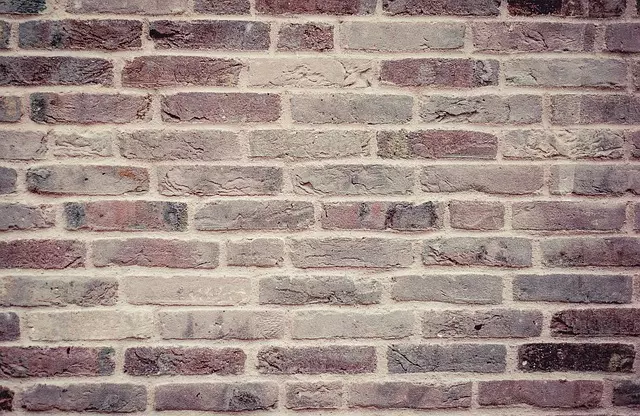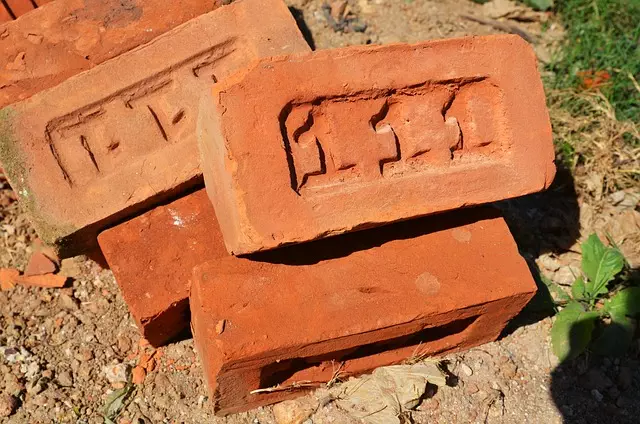When considering brickwork construction in Oak Harbor, Ohio, it's crucial to understand the various factors influencing both costs and project execution. Brick types, such as clay, concrete, or recycled bricks, and laying patterns including common bond, Flemish bond, and English garden wall, significantly affect expenses due to their material and labor intensity. The choice between local or imported materials, along with the complexity of design elements like arches or curves, also plays a role in cost estimation. Economic conditions, mason availability, regional demand, and the necessity for specialized features further complicate budgeting. Prospective homeowners and contractors should research extensively, gather quotes from local experts, and consider factors like brick size, color, texture, mortar type, scaffolding needs, and climate impact to make informed decisions that balance cost with architectural quality. In Oak Harbor's unique building industry, master masons apply both traditional and modern techniques to ensure structural stability and aesthetic appeal, adapting to the region's challenging climate while maintaining high construction standards. The interplay between brick selection and laying techniques is key to precise cost estimations for successful brick work construction projects in this area.
Exploring the intricacies of brick work cost estimation in Oak Harbor, Ohio, this article delves into the multifaceted nature of bricklaying costs. From understanding the financial implications associated with constructing in the area, to a detailed examination of various brickwork types and their cost factors, we aim to provide comprehensive insights. Mastery of brick laying techniques is also pivotal for efficient and cost-effective projects, a topic we will explore thoroughly. Additionally, this piece addresses the impact of material selection on bricklaying expenses unique to Oak Harbor, and the importance of labor and time considerations in crafting a realistic construction budget. Join us as we navigate the nuances of brick work construction costs, ensuring your next project is both structurally sound and economically prudent.
- Understanding the Cost Implications of Brick Work Construction in Oak Harbor, Ohio
- A Breakdown of Types of Brickwork and Their Individual Cost Factors
- Mastering Brick Laying Techniques for Efficient and Cost-Effective Projects
- Material Selection and Its Impact on Bricklaying Costs in Oak Harbor
- Factoring in Labor and Time: The Human Element in Brick Work Construction Budgets
Understanding the Cost Implications of Brick Work Construction in Oak Harbor, Ohio
In Oak Harbor, Ohio, brick work construction stands as a testament to durability and architectural integrity. Prospective homeowners or contractors considering brick as their primary building material must comprehend the cost implications associated with this age-old craft. Brick work construction in Oak Harbor is not merely about laying bricks; it encompasses various types of brick work, each demanding a specific set of skills and materials. From traditional stretchers to more intricate headers and soldiers, the choice of brick type and pattern can significantly influence the overall cost. Factors such as brick size, color, and texture come into play, with locally sourced bricks often being more economical than imported varieties. The labor costs in Oak Harbor also vary depending on the complexity of the brick laying techniques employed; for instance, a simple stretcher bond may be less expensive than a complex herringbone or Flemish bond pattern. Additionally, the cost can be affected by local economic conditions, the availability of skilled masons, and the current demand for brickwork services in the area. It’s crucial to conduct thorough research and obtain multiple estimates from reputable contractors to accurately gauge the financial investment required for a brick work construction project in Oak Harbor, Ohio. By understanding these cost implications, stakeholders can make informed decisions that align with their budgetary constraints while achieving the desired aesthetic and structural outcomes.
A Breakdown of Types of Brickwork and Their Individual Cost Factors
In the realm of brickwork construction in Oak Harbor, Ohio, understanding the various types and their associated cost factors is crucial for accurate budgeting and planning. Bricklaying techniques and materials can significantly influence the overall expense of a project. Traditional stretchers and headers are a standard brick work construction method, where ‘stretcher’ bricks lay lengthwise or horizontally, while ‘header’ bricks span across walls as support. This technique is cost-effective but may require additional structural elements for stability. Facing bricks, used prominently on the front of structures, are typically higher quality and come at a premium compared to inner-wall bricks that are less visible. The choice between facing and ordinary bricks can thus affect project costs substantially.
Furthermore, the complexity of brick laying techniques also plays a pivotal role in cost estimation. A cavity wall, for instance, which includes two skins of brickwork with a cavity between for insulation, is more labor-intensive and expensive than a single-brick leaf wall. The addition of special features such as arches, corners, and curves can further increase costs due to the specialized skills required for their execution. Additionally, factors like the type of mortar used, the need for scaffolding, and regional price variations for bricks and labor in Oak Harbor must be considered. These elements all contribute to the total cost of brickwork construction, making it essential for contractors and homeowners to carefully assess each aspect when planning a project.
Mastering Brick Laying Techniques for Efficient and Cost-Effective Projects
In the realm of brick work construction in Oak Harbor, Ohio, mastering the craft of brick laying is both an art and a science. Skilled masons are integral to the success of any project, as their proficiency directly impacts the efficiency and cost-effectiveness of the build. Utilizing tried-and-true brick laying techniques not only ensures structural integrity but also minimizes material waste and labor hours. Understanding the various types of brick work, from common bond to Flemish bond, allows masons to select the most appropriate pattern for the project’s design and budget. This knowledge is crucial in optimizing the use of bricks and mortar, thereby reducing overall costs while maintaining high standards of quality.
Moreover, the precision and expertise involved in laying bricks cannot be overstated. Each stroke of the trowel and every careful alignment of brick contributes to a structure’s longevity and aesthetic appeal. In Oak Harbor, where the climate can be harsh on outdoor constructions, employing advanced brick laying techniques is essential for creating resilient walls that withstand the test of time. By staying abreast of the latest methods in brick work construction, local masons enhance their contribution to the community’s infrastructure, ensuring that every project, from residential homes to commercial buildings, stands as a testament to their skill and dedication.
Material Selection and Its Impact on Bricklaying Costs in Oak Harbor
When embarking on a brickwork construction project in Oak Harbor, Ohio, material selection plays a pivotal role in determining the overall cost. The choice between various types of bricks—such as clay bricks, concrete bricks, and recycled brickwork—can significantly influence expenses. Clay bricks, for example, are traditional and offer superior durability but come at a higher price point compared to their concrete counterparts. On the other hand, concrete bricks, although less expensive, may require additional maintenance over time to ensure their longevity. Recycled bricks can be an eco-friendly and cost-effective solution, yet their availability and condition may vary, impacting both cost and project timelines.
In Oak Harbor, the costs associated with bricklaying are also affected by the techniques employed during construction. Traditional bricklaying methods may incur higher labor costs due to their time-intensive nature, whereas modern techniques such as dry-stack bonding or the use of specialized machinery can expedite the process and potentially reduce labor expenses. Additionally, the complexity of the design and the precision required for intricate patterns like Flemish bond or English garden wall will inevitably affect the cost estimation. Homeowners and contractors must weigh these factors carefully to ensure a cost-efficient project while maintaining the integrity and aesthetic appeal of the brickwork construction in Oak Harbor, Ohio. Understanding the interplay between material choices and bricklaying techniques is essential for accurate cost estimations and successful project outcomes.
Factoring in Labor and Time: The Human Element in Brick Work Construction Budgets
In the realm of brick work construction in Oak Harbor, Ohio, accurate cost estimation is a cornerstone of successful project management. A critical component of these estimations involves accounting for labor and time, which are integral to the human element within bricklaying endeavors. Labor costs can be influenced by various factors, including the types of brick work—such as common bond, Flemish bond, or English bond—and the complexity of the patterns used. Each type of brick laying technique demands a different skill set and, consequently, a different rate of compensation. For instance, the precision required for a Flemish bond layout is typically more demanding than that of a common bond, thereby commanding a higher wage. Additionally, the proficiency of the masonry team can impact efficiency; experienced masons may complete tasks quicker, which can lead to cost savings and faster project timelines. Understanding the local labor market in Oak Harbor is also pivotal, as seasonal demand and availability of skilled workers can influence labor rates. Project managers must carefully consider these human factors when estimating costs for brick work construction projects to ensure a comprehensive budget that accounts for all aspects of labor and time investment.
Moreover, the time element cannot be overstated in brick work construction projects. Weather conditions, site preparation, and the complexity of designs all contribute to the total timeline. For example, intricate patterns or specialty bricks may require additional time for preparation and laying, which should be factored into the schedule and budget. Project delays can not only affect the project’s timeline but also incur additional labor costs due to overtime or the need to extend the project duration to accommodate weather delays. Accurate cost estimation requires a nuanced understanding of the interplay between labor skill levels, project complexity, and the potential for unforeseen delays. By considering these factors, construction managers can create more precise budgets that align with the actual labor and time investments required for brick work construction projects in Oak Harbor, Ohio.
In wrapping up our exploration of brick work construction costs in Oak Harbor, Ohio, it’s clear that a comprehensive understanding of the various factors influencing these expenses is crucial for any building project. From the selection of materials to the mastery of bricklaying techniques, each element plays a significant role in the final cost. Homeowners and contractors alike can benefit from a detailed breakdown of types of brickwork and their associated costs, ensuring a well-informed approach to budgeting for such projects. By carefully considering labor, time, and material selection, stakeholders can optimize their construction budgets for brick work in Oak Harbor, leading to successful and economically viable builds. It’s an investment that combines the enduring quality of brick with the cost-efficiency derived from expert technique, making it a smart choice for the community’s building needs.


